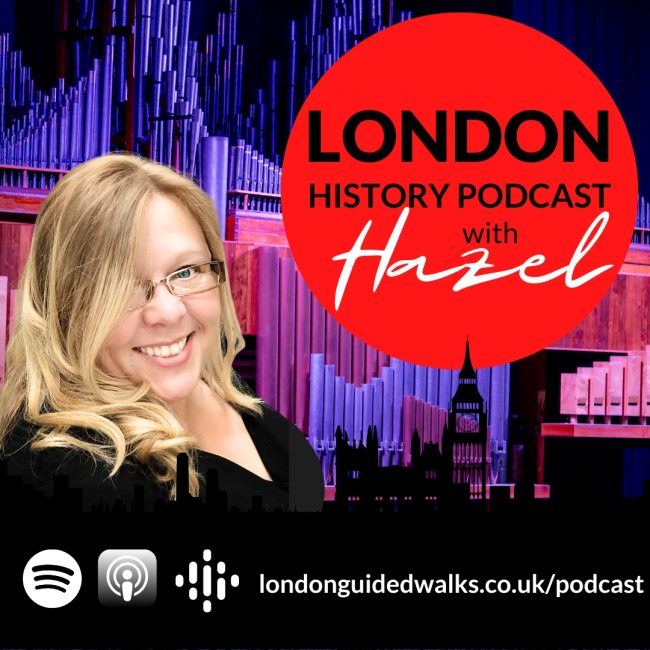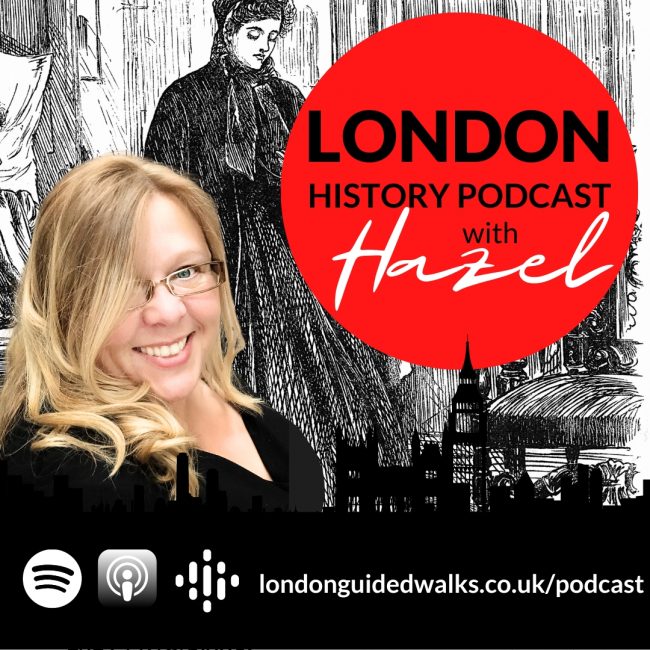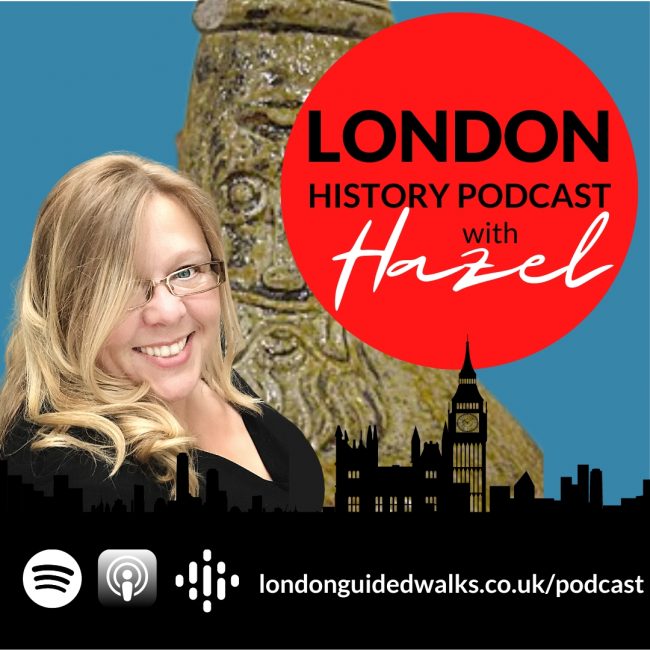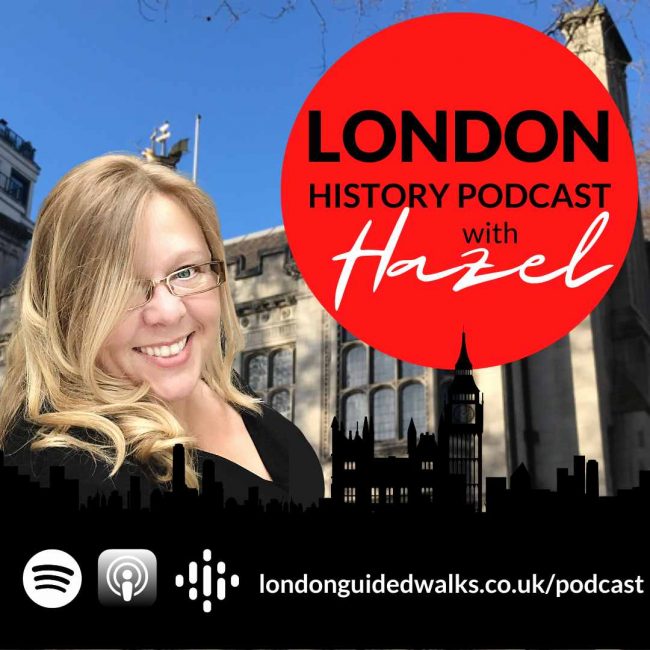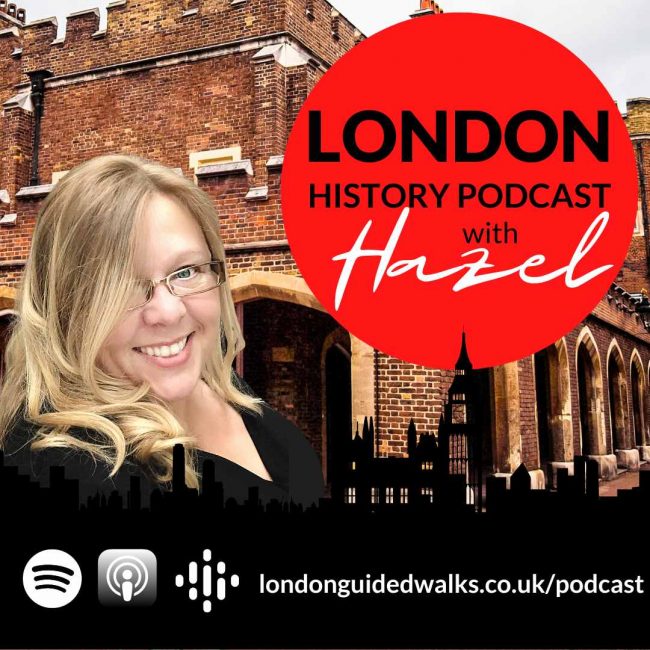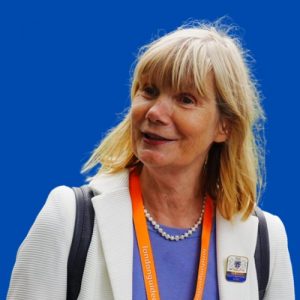
I love the history of London, the stories, the scandals, and the wonderful architecture: just a few of the aspects that make for great guided tours in the capital. My London walks will take you to historic sites as well as lesser-known locations, revealing the diverse makeup of the people
who lived and worked in London through the ages.
It was an Open London weekend a number of years ago that inspired me to take up guiding so I trained as a Westminster and Camden tour guide. As a former history teacher and archaeology graduate, I love to share what I know.
My London walking tours are informative but also fun, aiming to give you a great 90 minute experience to enhance your day.
Book a walking tour with Kirstie
 Hazel Baker is an active Londoner, a keen theatre-goer and qualified CIGA London tour guide.
Hazel Baker is an active Londoner, a keen theatre-goer and qualified CIGA London tour guide.
She has won awards for tour guiding and is proud to be involved with some great organisations. She is a freeman of the Worshipful Company of Marketors and am an honorary member of The Leaders Council.
Channel 5’s Walking Wartime Britain(Episode 3) and Yesterday Channel’s The Architecture the Railways Built (Series 3, Episode 7). Het Rampjaar 1672, Afl. 2: Vijand Engeland and Arte.fr Invitation au Voyage, À Chelsea, une femme qui trompe énormément.
Useful Links:
Episode 121: Suffragette Annie Kenney
Episode 131: Endell Street Military Hospital
Transcript:
Hazel Baker: Could you maybe start by giving our listeners an overview of the differences between the suffragists and the suffragettes?
[00:00:10] Kirstie Shedden: Okay. So the basic difference between the two was that the suffragists had peaceful methods for their campaign to get the votes for women.
So in order to get their message across, They would do things like hold lectures where there would be speakers. They produced pamphlets. They sent articles to various magazines. In fact, they had their own magazine as well, Common Cause. Whereas the suffragettes were more militant and became increasingly militant during the period of their existence, they did.
ordinary things like marches. And they also had their own magazine as well, The Suffragette, which started life as Votes for Women. And but they also gravitated to more direct action, I think we’d call it, or milicency. Some people would have said that they were almost terrorists by the time they’d finished.
But this was in order to get publicity. and greater publicity, they felt, than the suffragists were getting for the cause for Votes for Women.
[00:01:20] Hazel Baker: Tell us a little bit more then about the suffragist movement and the beginning of Votes for Women campaign before the creation of the suffragettes.
[00:01:29] Kirstie Shedden: The suffragettes began life in 1903, but they owed a huge debt, of course, to the , suffragists, who had been going since the 1860s.
You could say possibly even before that writers such as Mary Wollstonecraft were talking about women being equal to men and how they should have better rights and better access to education. She in fact was one of the people that said if you don’t educate people, how can they contribute in the way that you’re suggesting in parliament and running the country?
But it was really in the 1860s, so there had been in 1832 an extension of the franchise for men due to protests, and in 1860, this whole debate was hotting up still further, and many working class people, many middle class people were agitating for the vote. The Parliament deemed it necessary to introduce further reform.
So this was seen as a chance by people who did believe in Votes for Women to begin the process, if you like, of adding women to the franchise. A group had started in London called the Kensington Society of Middle Class Women who had been educated and who understood about affairs of the country and wanted to be involved and, but they were a sort of private group.
They they had chats and talks over things. But in 1867 they had the opportunity to have a, an amendment to the Act, the 1867 Act, that was going to go through Parliament. And this was because John Stuart Mill believed in equality for women. He was a philosopher and economist and also happily an MP for Westminster and he agreed to propose an amendment if a petition was signed.
So petition was got ready and it was presented to Parliament and then they had, then John Stuart Mill introduced the amendment. It failed. By 196 to 73 votes. Although John Stuart Mill and others such as Henry Fawcett, who were supporters of the amendment were quite pleased that they felt this was actually a good starting point, even if they couldn’t get it through.
at this particular point in time. And it was then that a society started to build up and become more formal to press for the vote. So it was the London Society that grew out of the Kensington Society, and they had committee members. The secretary was a woman called Emily Davis. She, Banningerton College, Cambridge so that women could be educated for degrees.
Of course they couldn’t actually take them at Cambridge. No one awarded them. They could take the exams, they could take the courses, but they couldn’t say they had a degree until 1948. So that does show you a reason for the slow process. So even by the beginning of the 20th century things were very slow moving.
And from that time onwards women started to speak at these meetings. Melissa Fawcett, who was to lead the suffragist movement later on, she was a committee member, and she was only 19. And she gave talks, her husband, she married Henry Fawcett, that’s her other member of parliament I mentioned, and she began campaigning, touring the country, speaking at lectures, and so did other women.
So it became a more public thing, and more societies around the country grew up.
[00:05:11] Hazel Baker: And you mentioned, though, the other earlier groups, as well as the London Society. Can you tell us something a little bit more about those?
[00:05:20] Kirstie Shedden: Yeah another place that was very significant at this early time was Manchester.
Which was also the founding city, in fact, for the WSPU, the Suffragettes, in 1903. They founded the Manchester National Society for Women’s Suffrage in 1867, in the wake of that Act of Parliament. And they met in the Free Trade Hall in April. 1868 and started speaking out again publicly.
Manchester was incidentally also the place where Lily Maxwell, a shopkeeper, became the first known woman to vote in a parliamentary election because she’d been mistakenly included on the register of electors following the 1867 Reform Act. And of course that was because she owned a shop and ran it in her own right.
There were other societies as well in places like Edinburgh and Birmingham. So it was quite extensive. The Manchester Society had members on the committee, such as Richard Pankhurst, who married Emmeline Pankhurst, the leader who became the leader of the suffragettes, Lydia Becker, also very well known in women’s rights.
She was the secretary. And they wanted at this particular point in time, votes for women on the same conditions as. or might be granted to men. And at 11 years old Emmeline Pankhurst heard Lydia Becker speak. So that’s why I say the suffragettes had a debt, if you like, to the past suffragists, both in London and Manchester.
[00:07:01] Hazel Baker: Why was the, I’ll say the National Union of Women’s Suffrage Societies, I mean it’s a mouthful isn’t it, the NUWSS why was that created?
[00:07:13] Kirstie Shedden: I think the, as I say, more and more groups were being set up all the way around the country based on wanting women’s suffrage. But in 1884, there was the third reform act that was passed and once again women were not included in the voters so this extended the franchise to many working class men and others but yet again there was no talk of adding women to the franchise and so this again spurred on more interest in the movement and so There was, there were so many sort of disparate groups that it was decided that you were much more likely to get what you wanted if you had a national movement that was coordinated, and then you could share resources, share ideas and all of that kind of thing.
And so the N-U-W-S-S was created in 1897, and in 1907, Millicent Forcet became the leader. Okay, I mean it wasn’t all plain sailing because by this time there were doubts in some people’s minds about whether or not a parliament would ever give women the vote on the basis of men and whether or not they should campaign for a sort of lesser success in the hope that could then be built on.
And other people who by this time, by the end of the 19th century, were really focused on universal suffrage. So all men and all women gaining the boat. And so women’s suffrage being part of that idea.
[00:08:52] Hazel Baker: And what about the suffragettes of the Women’s Social and Political Union? The WSPU?
[00:08:59] Kirstie Shedden: Okay, so Elene Pankhurst and her husband Richard Pankhurst, had spent some time down in London.
Dr. Pankhurst was a key member of the liberal party, or they never actually became a me MP himself. And he was very concerned with women’s rights and in fact, other issues that needed reforming. And they were down in London, but when they couldn’t afford to be down in London, so they came back to Manchester, which as I said was the sort of real center for campaigning for women’s suffrage, and it was also a big area that where people were trying to, have unionism, helping poor, that kind of thing there.
And Emmeline Pankhurst really got involved in that. Richard got very upset with the Liberal Party. He believed in the end that they wouldn’t do anything. So he joined the newly formed Independent Labour Party and Emmeline followed suit. But she got very disillusioned with this whole idea that We want the men to get the vote first and we don’t want women being involved in this act because it will slow things down for us.
The Labour Party, although many members supported women’s suffrage, others thought that the men should get the vote first. So Emmeline was quite disillusioned with this and she and her daughter Christabel looked back on the suffragist movement and decided you know, this had been going on for a really long time and Women still didn’t have the vote, so they decided that what they needed was publicity.
They needed to get noticed, and so they decided, as Christabel said, to go out and get it, to get the vote for women, and their motto became Deeds Not Words. And their first deed, one of their first deeds, was in 1905 when Christabel and Annie Kenny went to the Manchester Trade Hall. and disrupted a Liberal Party meeting.
The election had been called and so candidates all over the country were going to speak and they shouted out, are you going to introduce votes for women, etc. And then they were Shown out. I was taken out of the hall and Christabel spat at the policeman thus getting arrested Went to prison having refused to pay the fine so that got into the newspapers and this was their their method, the start of their methods to get noticed and get in the papers
[00:11:39] Hazel Baker: To our listeners, you might have heard the name Annie Kenny there, and it’s worth mentioning that Kirstie has also done an earlier episode, number 121, so that’s one two one, and in there you can hear about the capitulating life of Annie Kenny, who was a working class woman, who ascended to the forefront of the suffragette movement in the early 20th century.
So you can have a listen to that. I’ll put the link in the show notes. So Kirstie, can you maybe describe a typical event for each of these separate groups? How did they, what were the differences between the suffragists and the suffragette events?
[00:12:19] Kirstie Shedden: Okay let’s take 1908. We’re a few years into the suffragettes campaign, and the suffragists are gaining more and more support, in 1908, Asquith became Prime Minister, and one of the things he wanted, so he claimed, was that he needed to understand how many women really wanted the vote and so marches seemed like a good idea because they would having, large numbers of people attend them. So in 1908, the NUWSS organized their second march ever in London, a highly coordinated event.
Train tickets were bought and paid for women who wanted to come to London to be on the march who couldn’t afford it. Food and drink was provided. And off they marched through London, ending up in the Royal Albert Hall, where speeches were delivered by Millicent Fawcett and others. There were banners, there was singing, but there was no violence, no milicency, and no police action either.
And nobody ended up arrested. Asquith didn’t really react to this march. He said, I’m still not sure that women really want the vote, or that the majority of women really want the vote. And there was very low level publicity for this event. Contrast that in June. The last day of June, the suffragettes had already had a march, a very successful march, I talk about that on my walk.
But they decided to organise a demonstration in Parliament Square. Thousands attended with a large police presence, and this turned into a huge clash between the women and police as they tried to get into Parliament and lobby MPs although, worse abuse was to come in the following years and this was pretty, but this was a pretty violent clash.
In protest, two of the suffragettes took a taxi to Downing Street and they managed to get some stones out of their pockets and smash the Prime Minister’s windows at number 10. Of course, they were arrested. They got sent to Holloway Prison. All of this was reported in the press, but you know the suffragettes really like to make the most of their actions.
So when Mary Lee and Edith New, those were the two suffragettes in prison in Holloway, were released, several hundred suffragettes waiting for them. And they were taken by coach to the Queen’s Hall, a breakfast had been prepared, there was a march along behind the carriage, speeches were made. So the suffragettes were making enormous capital out of their event.
Direct action, militancy. sympathy, talking about the appalling treatment meted out to the women, all of those kind of things made their events quite different from the NUWSS.
I was just going
[00:15:23] Hazel Baker: to, no, I’ll leave it. I’ll leave it. All right. Yeah. So big difference then, isn’t it? It must be so frustrating that you’re wanting to get, you’ve got an end point, a target, and no one up there is actually able to make that change is even wanting to listen and even though showing four So thousands of women on the streets, and still going.
Oh, i’m not quite sure
[00:15:48] Kirstie Shedden: Exactly
[00:15:50] Hazel Baker: so neither organization succeeded in persuading the liberal government in the early 20th century, to change the law any more than their predecessors, which is really rather disheartening. What were the reasons, do you think?
[00:16:07] Kirstie Shedden: So I think there were a number of things.
I think throughout the 19th century, and this continued on into the early 20th century, and, even far beyond that, this whole idea that women were supposed to be the homemakers, that they were supposed to be bringing up a family and looking after the house. Their world was private and their world was not in the public domain.
Now, of course, this was Fairly ridiculous by this amount of time. Laws had been passed which enabled women to, for example, be a mayor, to vote in local elections to work in various posts, like a poor law guardian. They could be a factory inspector. We’re not talking about. all women. But somehow this was the last male bastion that they didn’t really want women involved in, that they thought that women could not manage to understand the complexities of the world, or maybe their place was in the home.
So there was this sort of attitude, which wasn’t an attitude of all men, but unfortunately during that early part of the 20th century, it was the attitude of the leadership. There were also a whole bunch of women who didn’t agree. with women getting the vote. And in 1908, the Women’s National Anti Suffrage League was established in London.
And a huge leading light here was a woman called Mary Ward. And she was exactly the sort of person that you would have expected would have been a suffragette really. She had her own money. She was a novelist and her book, Robert Ellesmere, had made her a millionaire, I think, I believe. And she, along with the Prime Minister’s wife and others, were very vocal in denying that women should have the vote.
They wanted women to vote in local councils, but out in the big wide world they didn’t think women should have the vote. And so this was a kind of excuse, if you like, that the government could use to say, but we’re not sure that all women want the vote, so therefore Even though some people do it wouldn’t be right to give them the vote.
The militant tactics, of course, was something that the NUWSS blamed the suffragettes for discrediting the movement for the votes for women. They wanted to be seen as rational thoughtful and people who had the best argument, who had the argument for votes for women and the militant tactics spoiled that they felt to some extent.
But also, and probably a very big factor with this political fear, the fear of what would happen if women were given the vote. There were more women than men at this time, and so the electorate would be swamped by women. And then what would happen? The Liberals feared that if you only gave the vote to some women, the wealthier women, they would all vote conservative.
Others had a different view, but all of these things came together to mean that there wasn’t going to be a government less legislation, if you like, supported by the leadership through parliament.
[00:19:37] Hazel Baker: Now you’ve had a little listen of suffragettes and suffragists what would you have been back then? I encourage you to have a little think in your own time, and all I’ll say is that well behaved women rarely make history. Kirstie, thank you very much.
[00:19:57] Kirstie Shedden: Join me for my walk on the suffragettes. International Women’s Day is coming up. We’re going to be doing it
[00:20:04] Hazel Baker: on Friday, releasing this on Friday next week. So it will be International Women’s Day. Oh, wonderful. Brilliant. Yeah, so that’ll be nice and easy. So that was a lot better. It was still a little bit creaky, but I’m hoping I’ll be able to work on that.
So that was really strange. But yeah, I would check with Virgin about your bandwidth.
[00:20:25] Kirstie Shedden: Yeah, I don’t know. They’ve given us a new a new number and that, whether or not they’ve just messed something up. Yeah, so I think I will, because it did happen on a Zoom call. Sometimes things do happen on a Zoom call.
A lot of people have their microphones on, so I thought it was possibly that, but it’s a bandwidth issue, I think, there. Yeah. I think so.
[00:20:46] Hazel Baker: Yeah, because sometimes, like when you said then, it’s a bandwidth issue. I get it. It’s a band issue, and my brain’s filling in what you’re saying, but I’m not hearing it.
[00:20:57] Kirstie Shedden: Hopefully this is all right, otherwise I can do it again, yeah, or you can
[00:21:00] Hazel Baker: always pop over, have a cup of tea, meet the house bunnies again, and and we can record it as well. But yes, hopefully that, that’d be all right. Cause it went really well. It was really nice and clear.
And you’re able to put that fine balance of whereas I’d think I’d be a little bit over the top. Rawr! Still all bricks of the window. Yes. No, brilliant, Kirstie. Thank you very much
[00:21:21] Kirstie Shedden: for that. Okay then. Have a good day. Rest of the day. Yes. And you. All right.
[00:21:26] Hazel Baker: Ciao for now. Bye. Bye.

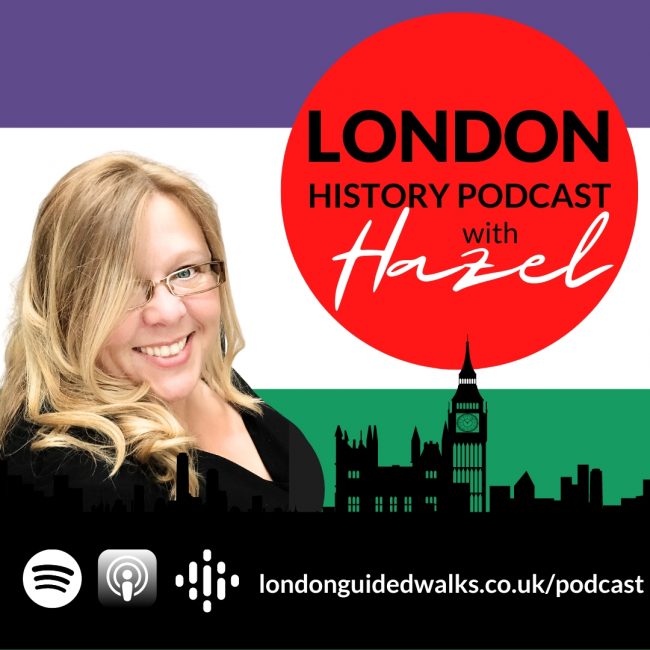

 Hazel Baker is an active Londoner, a keen theatre-goer and qualified
Hazel Baker is an active Londoner, a keen theatre-goer and qualified 